9 High-Fiber Foods for Weight Loss That Will Keep You Full and Satisfied
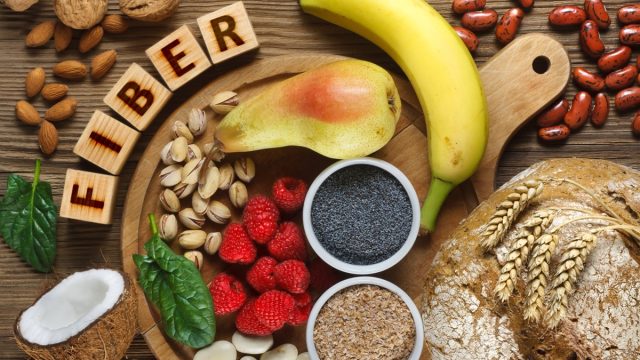
It’s high time you say goodbye to weight loss schemes and scams that rely on extreme calorie restriction. Not only do these shortsighted crash diets typically result in eventual weight gain and a pattern of yo-yo dieting, but they can also damage your organs, cause malnutrition, lead to a loss of lean muscle mass, produce gallstones, trigger eating disorders, and more. Rather than focusing on what you can’t eat and resorting to diets that keep you permanently hungry, you can instead focus on the nutritious foods that fill you up, making it easier to make better choices throughout the day. And eating high-fiber foods can be especially beneficial when it comes to building satiety.
Beyond helping to reduce cravings by keeping you fuller for longer, fiber can slow gastric emptying, reduce your overall appetite, and lengthen the time spent digesting your food. But the benefits don’t stop there.
Lauren Twigge, RD, the registered dietitian behind Lauren Twigge Nutrition, says that besides helping to manage your weight, there are several other health reasons to eat a fiber-rich diet. These include promoting good heart health, supporting digestive regularity, decreasing your risk of certain chronic illnesses including colon cancer, lowering your blood cholesterol, helping to manage your blood sugar, and more. So, keep reading to hear from Twigge and other nutrition experts about the best high-fiber foods.
RELATED: The Only Foods You Should Be Eating at Night, Doctor Says.
What foods are high in fiber?
1
Whole grains
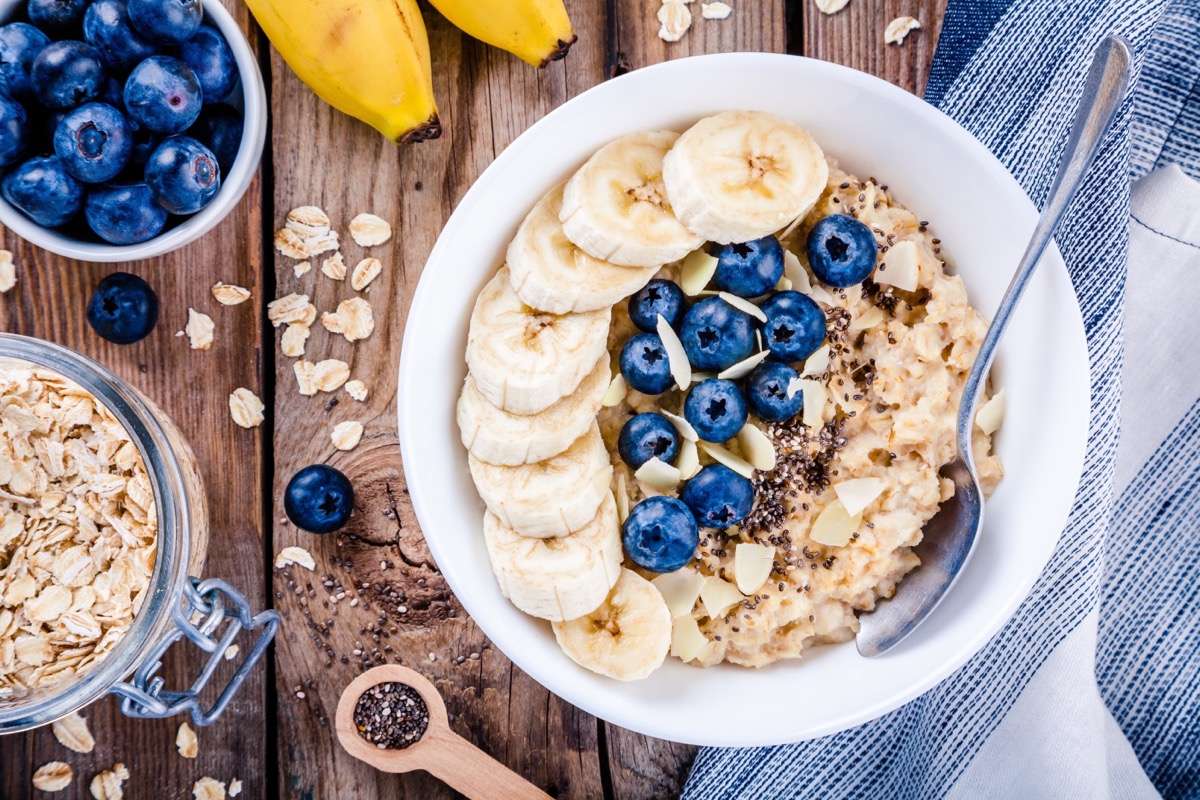
When it comes to weight loss, it’s important to remember that carbohydrates are not the enemy. In fact, eating healthy whole grains can help fill you up, making you less likely to eat impulsively later.
“I have a few favorite high-fiber foods that I recommend to those looking to improve their diet,” says Benedict Ang, a fitness, nutrition, and mindset coach for Total Shape. “First and foremost, I’d suggest whole grains like oats, brown rice, and quinoa. They’re packed with fiber and offer a wide range of nutrients, making them a staple in a high-fiber diet.”
2
Flax seeds
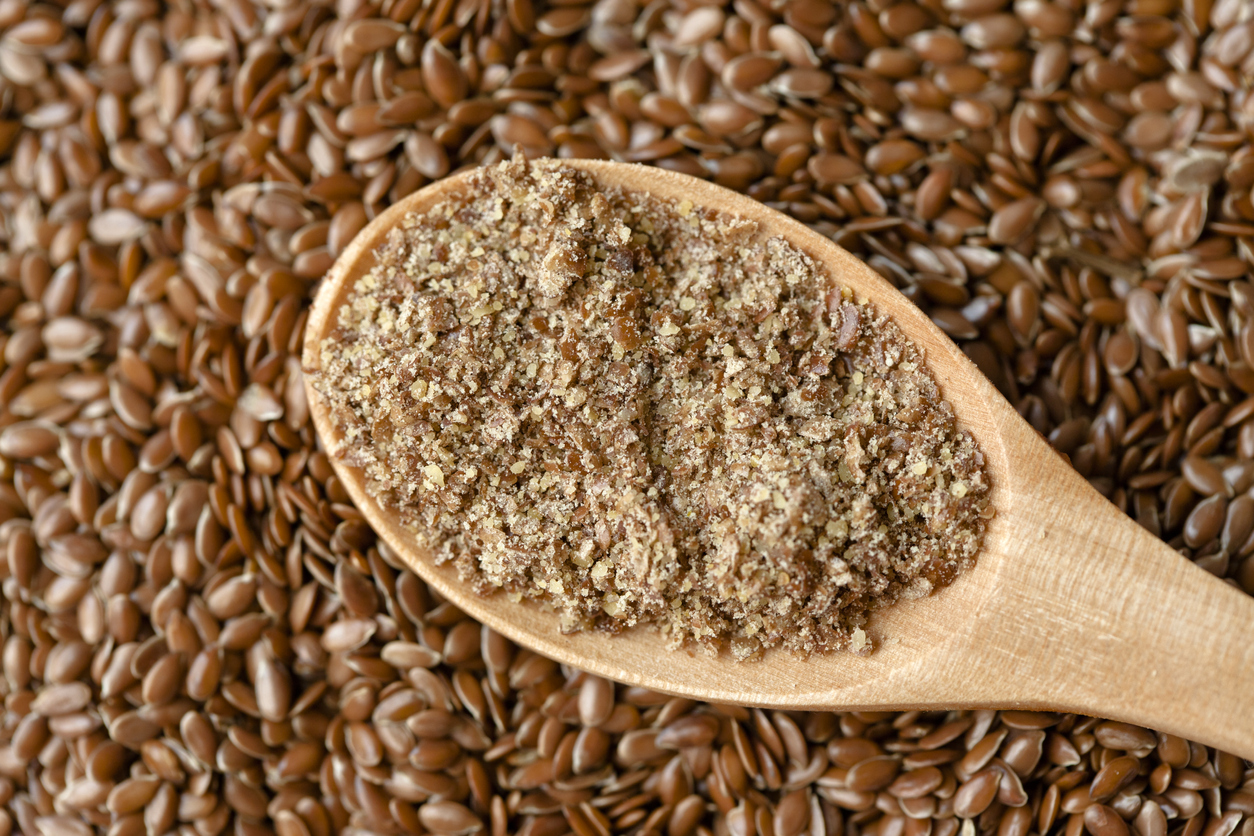
Seeds are rich in healthy fats, protein, and fiber—not to mention vitamins and minerals—yet they’re not often consumed as a regular part of the American diet. “Seeds are fantastic toppings for bowls of cereal, salads, or as grab-and-go snacks,” says Twigge.
Pumpkin seeds and sunflower seeds are filling options that add moderate amounts of fiber—2 grams and 1.5 grams of fiber per ounce, respectively—but flax seeds give you the biggest bang for your buck. These little seeds contain 7.7 grams of fiber per ounce, making them a great option if you want to reduce hunger and promote satiety.
RELATED: 8 Most Overrated and Underrated Health Foods, Nutritionist Says.
3
Chia seeds
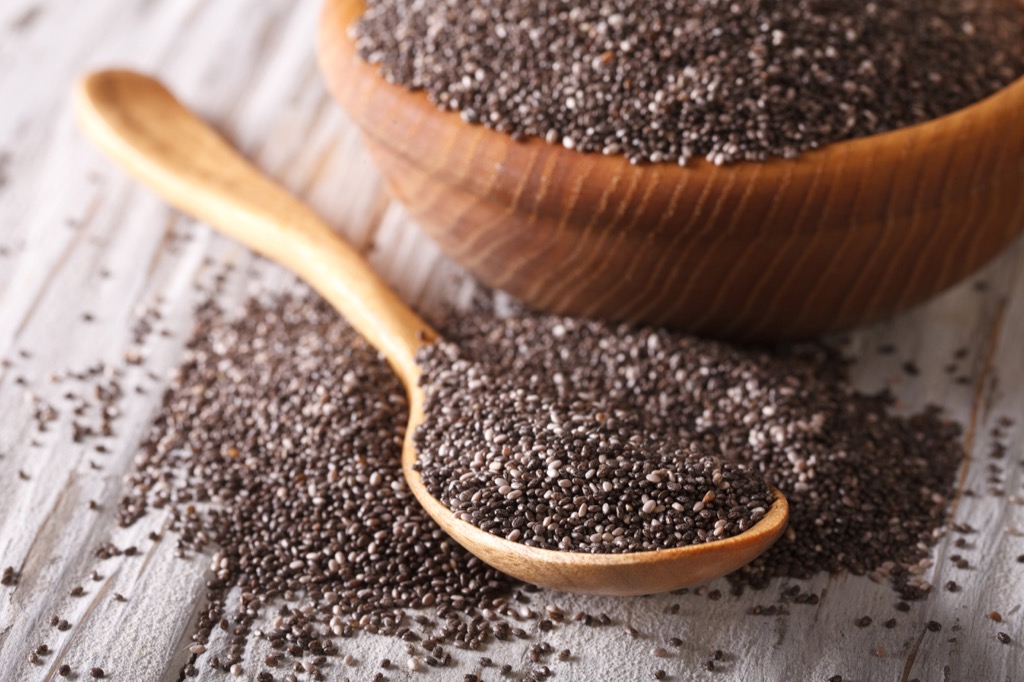
Chia seeds are another excellent option if you want to add fiber, healthy fats, protein, and more. Twigge says that adding just one ounce of chia seeds to your daily diet would add 9 grams of fiber and 4.5 grams of protein.
“This is probably one of my favorite ways to not only boost the fiber content of my diet but also add healthy fats and plant-based protein. In fact, chia seeds have almost a perfect 1:1 ratio of carbohydrates to fiber content. While it varies by brand, many chia seeds have about 6 grams of carbohydrates and 5 grams of fiber per serving,” she explains.
4
Berries
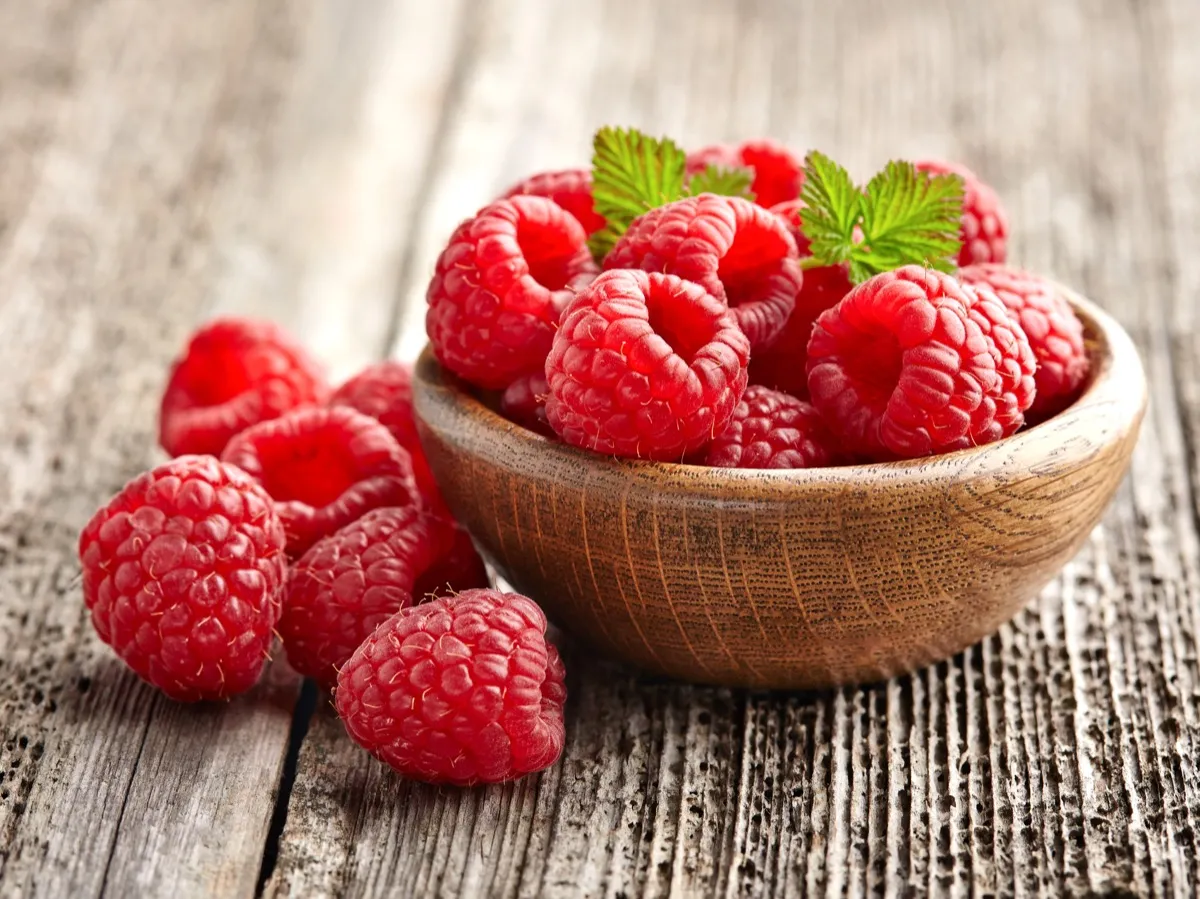
Twigge next recommends adding more berries to your diet. “Of all the fruits, berries are some of the most fiber-filled! Beyond those fiber-rich seeds, adding berries to your meals and snacks will give you a boost of flavor, antioxidants, and a serving of color,” she tells Best Life.
However, the dietitian notes that not all berries are created equally when it comes to their fiber content. While a cup of blueberries or strawberries has between 3.3 and 3.5 grams of fiber, raspberries and blackberries have between 7.5 and 8 grams of fiber.
RELATED: Top 10 Foods That Make You Gain Weight, Dietitian Says.
5
Apples, pears, and other fresh fruits
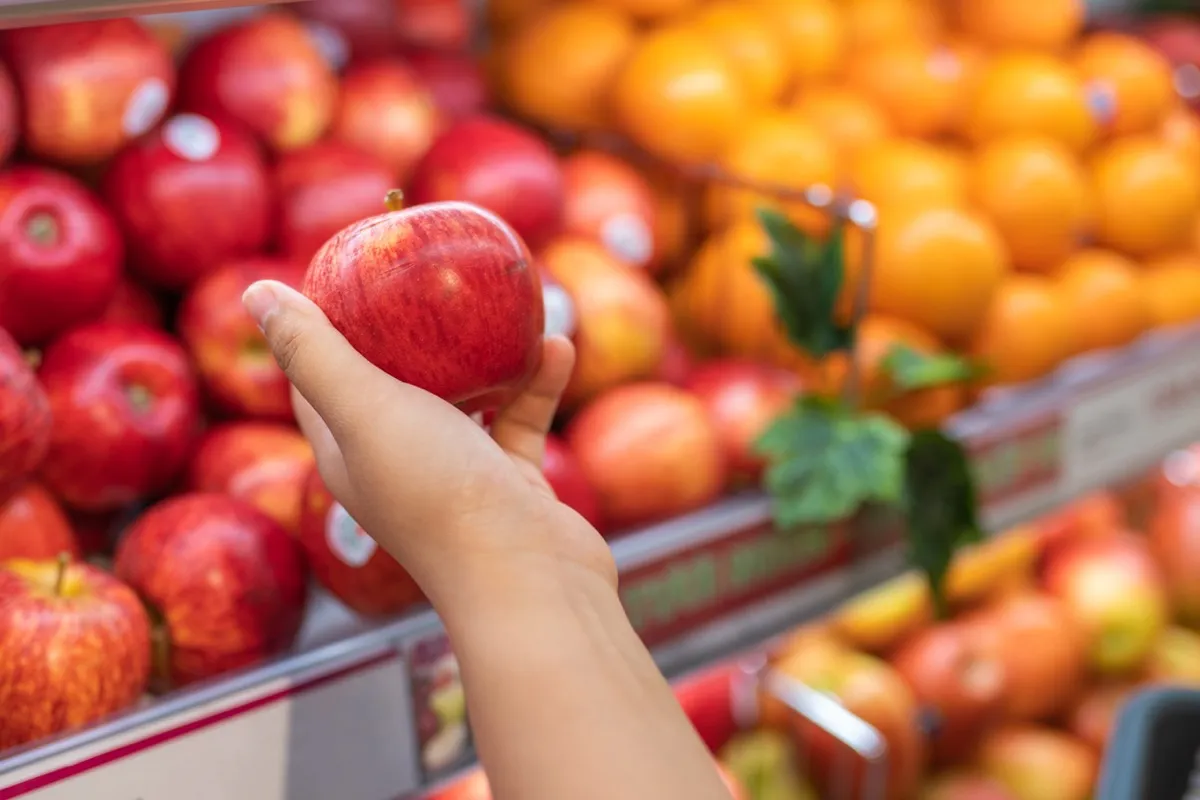
Next, the experts recommend other fiber-rich fruits such as pears, apples, mangoes, and more.
“While berries are a go-to fiber source, diced pears are also fiber-filled fruit choices that you could include. One cup of diced pear has around 5 grams of fiber, and the key to preserving that fiber content is to keep the skin on!” says Twigge.
6
Dried fruit
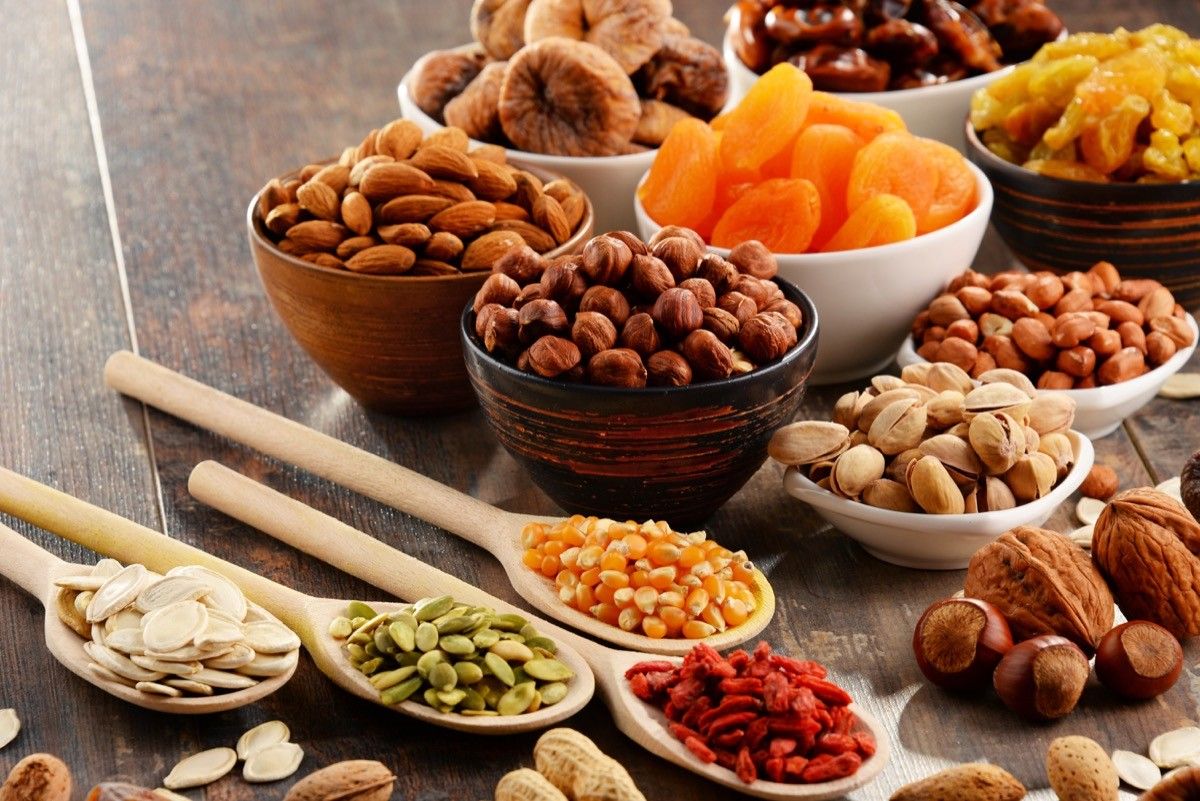
Many dried fruits are also high in fiber content and can aid in weight loss. However, experts note that it’s important to find options without added sugar, which can add excessive calories to even small portions.
“Don’t feel limited to only fresh fruit as your fiber sources, dried fruit is equally as delicious and fiber-filled,” says Twigge. She suggests eating raisins (10 grams of fiber per cup), prunes (12 grams of fiber per cup), dried apricots (9.5 grams of fiber per cup), and cranberries (8 grams of fiber per cup).
7
Artichoke hearts, greens, and other fresh vegetables
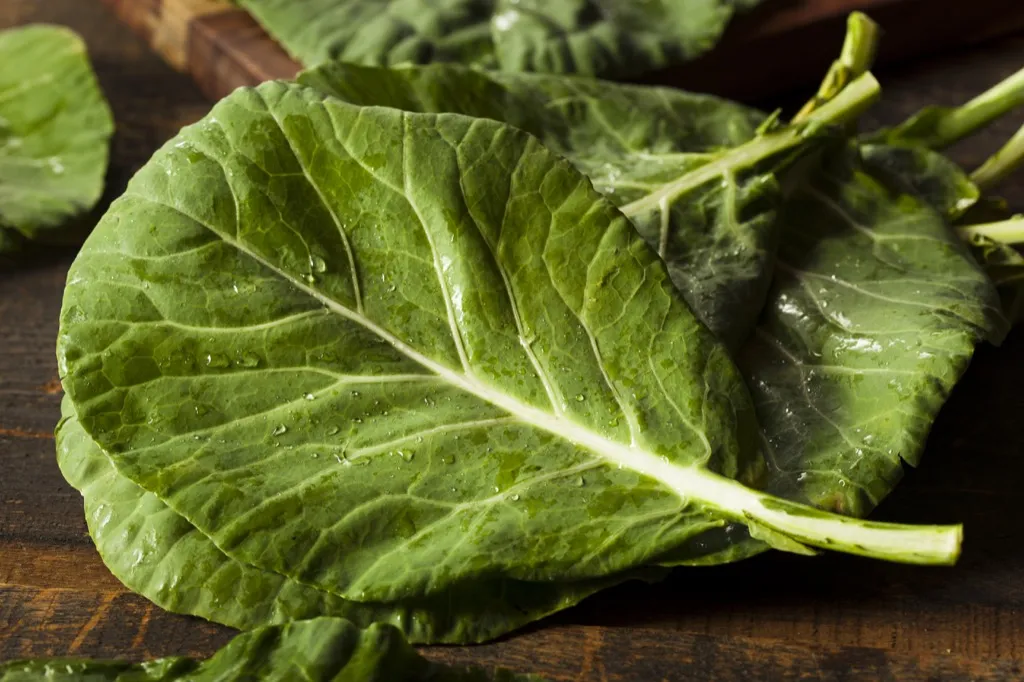
There are plenty of reasons to add more fresh veggies to your diet. Not only are they typically low in calories, unhealthy fats, and sugar, but they’re also rich in the essential vitamins and minerals your body needs to function fully.
Artichoke hearts, collard greens, and other fresh vegetables can be high in fiber, helping to fill you up and manage your weight while enhancing your nutrition. “Don’t forget about vegetables like broccoli, Brussels sprouts, and spinach,” adds Ang. “These veggies are low in calories but high in fiber, making them a perfect addition to your meals.”
RELATED: 4 Best Fruits to Erase Bloating, Science Shows.
8
Nuts
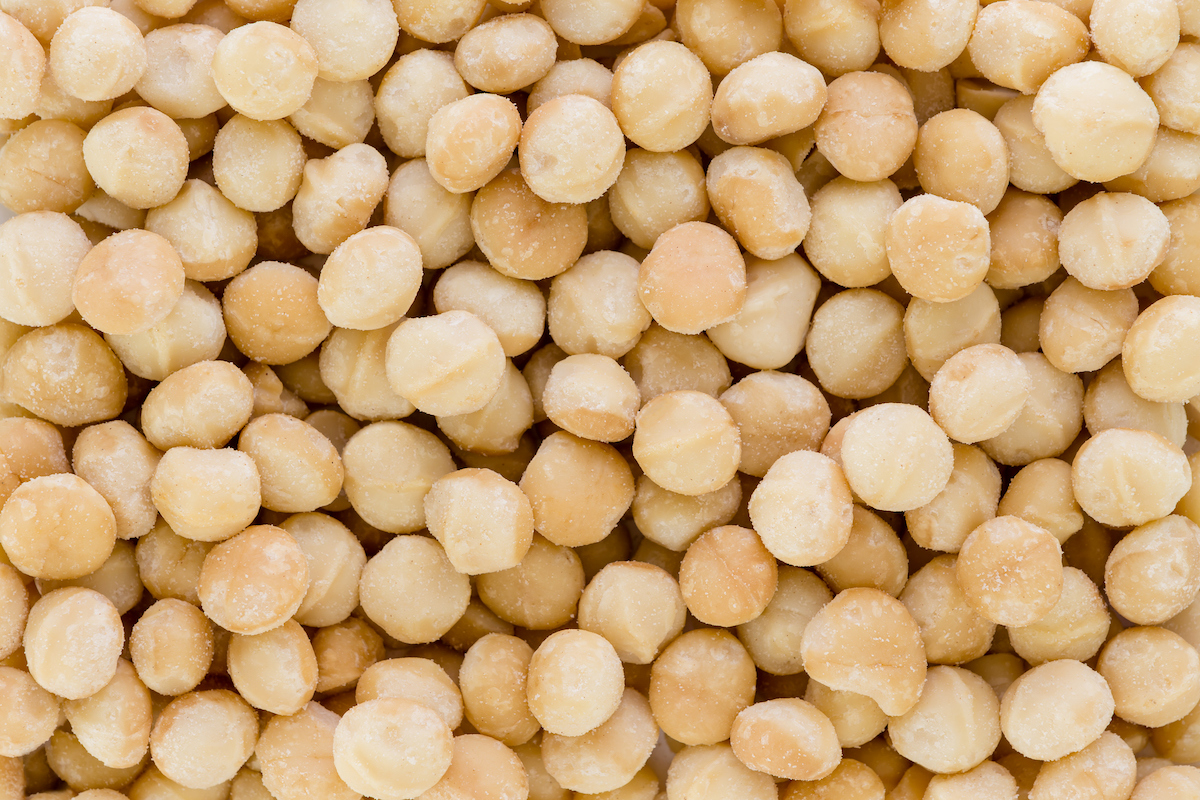
Nuts are rich in protein, omega-3 fatty acids, antioxidants, and—you guessed it—fiber. Studies have found that eating just a handful of nuts can reduce cravings, improve satiety, and lower your overall risk of obesity.
Walnuts contain roughly 5 grams of fiber per cup, making them a great snack to reach for. However, if you really want to get the most fiber per serving, you should go for macadamia nuts, which contain a whopping 12 grams per cup.
9
Beans and legumes
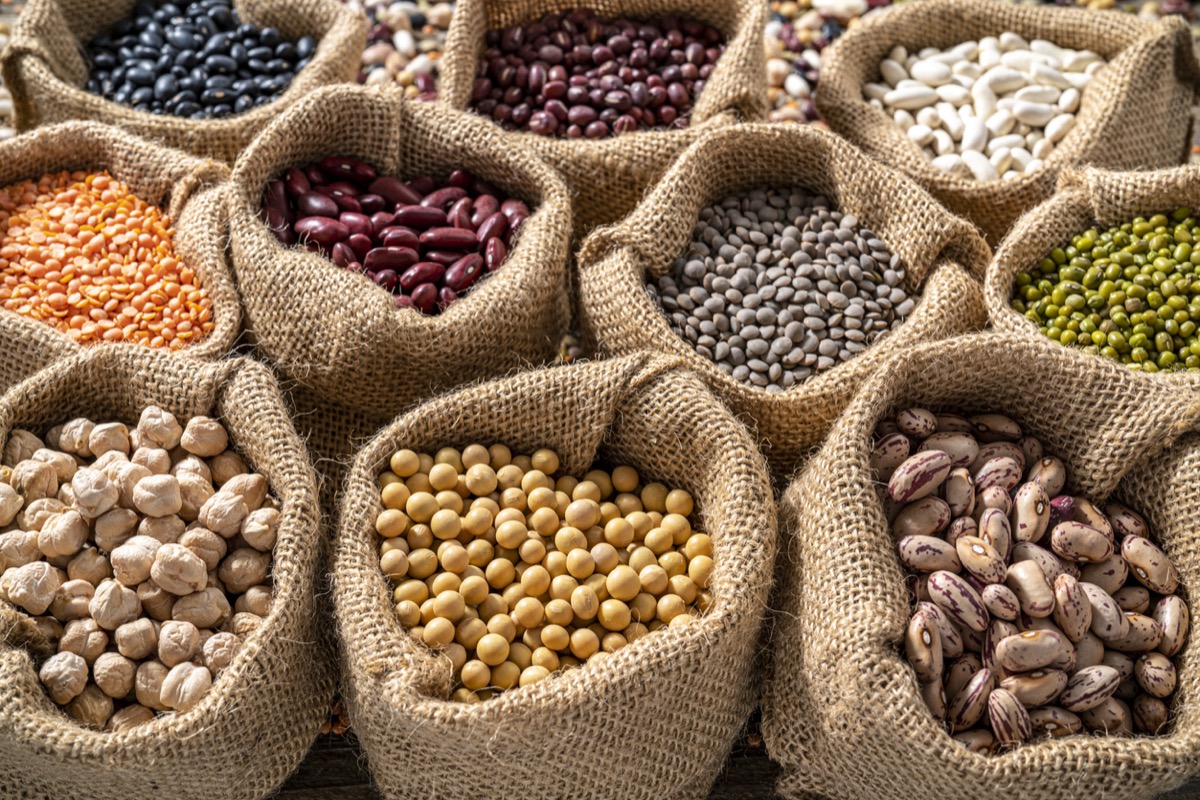
Beans and legumes are another great weight loss food that will keep you satiated long after your last bite. “Legumes, such as lentils and chickpeas, are excellent sources of fiber,” says Ang. “They’re not only rich in fiber but also a great source of plant-based protein, which can be incredibly beneficial for weight management.”
The best part? It’s hard to go wrong in terms of type. Whether you opt for black beans, garbanzo beans, kidney beans, or pinto beans—not to mention pulses such as peas or edamame—all have sky-high fiber levels ranging from 9 to 35 grams per cup.